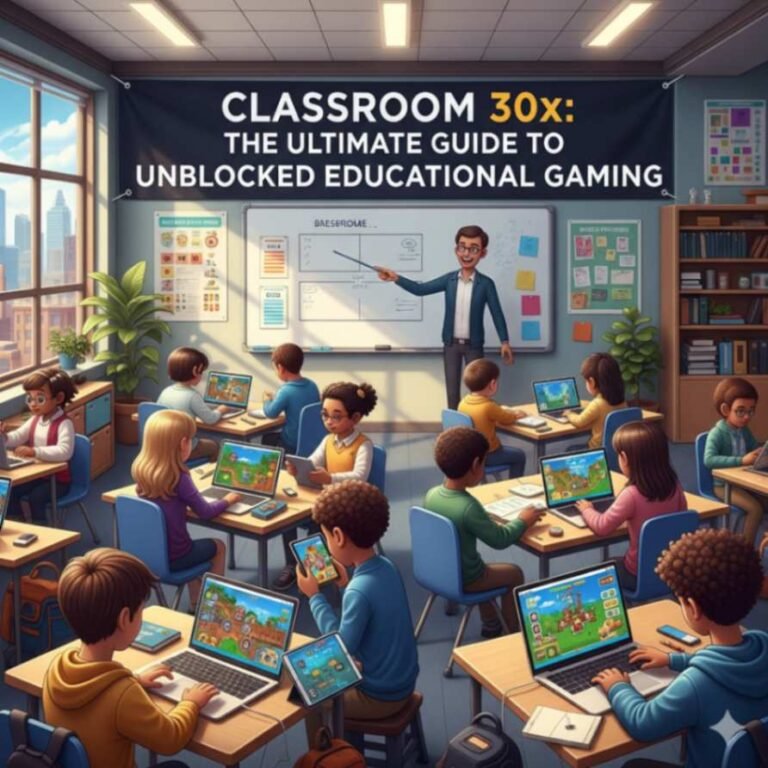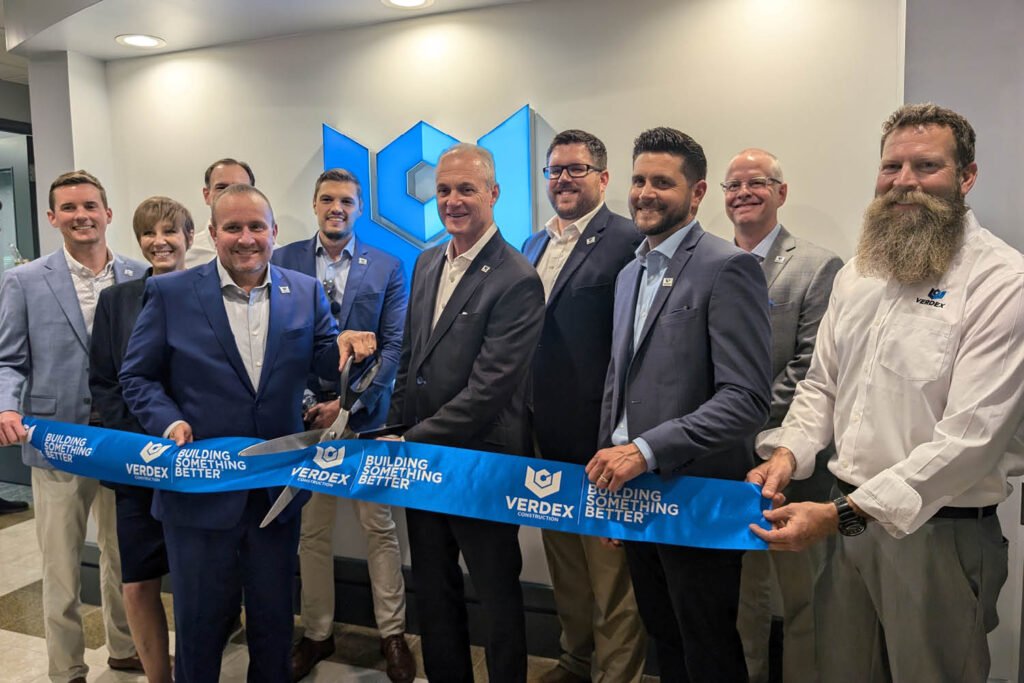Building a Classroom 30x for the Modern Learner
Picture a classroom. If you imagined rows of desks facing a whiteboard, it’s time for a serious upgrade. Welcome to Classroom 30x—a revolutionary concept that isn’t just about adding a few tablets to the room. It’s a complete overhaul of the learning ecosystem, designed to multiply student engagement, personalization, and outcomes by an exponential factor. This model merges cutting-edge educational technology with agile physical design and a fundamental shift in teaching philosophy to create the ultimate future of education.
This isn’t a distant dream. Schools around the world are already harnessing these principles to create dynamic, interactive learning environments that prepare students not for yesterday, but for tomorrow. Let’s dismantle the traditional classroom and build a smarter, more responsive 30x learning environment together.
What is a Classroom 30x? More Than Just a Number
The name “30x” is a symbol, not a literal promise. It represents an exponential leap in effectiveness a ambition to move far beyond the incremental changes we’ve seen in education over the past decades. A true Classroom 30x is a holistic framework where three elements fuse together seamlessly:
- Physical Space: The design and layout of the room itself.
- Technology: The tools used to access, create, and share knowledge.
- Pedagogy: The instructional techniques and approaches that promote learning.
When these elements work in concert, they create a powerful synergy. The room facilitates collaboration, the technology enables personalization, and the pedagogy empowers students to take ownership of their journey. It’s the difference between giving a student a map and giving them a live, interactive GPS that adjusts to their curiosity.
| Traditional Learning Space | The 30x Classroom Model |
| Teacher is the “sage on the stage” | Teacher is the “guide on the side” |
| Focus on memorization and repetition | Focus on critical thinking and creation |
| Static, rows of desks | Flexible, modular furniture zones |
| One-pace-fits-all instruction | Adaptive, personalized learning paths |
| Passive consumption of information | Active, collaborative exploration |
The Four Pillars of a 30x Learning Environment
Building a classroom that delivers 30x the impact requires a solid foundation. These four pillars are non-negotiable.
1. Agile Physical Design: Your Classroom as a Tool
The industrial-era classroom was designed for efficiency, not for learning. Classroom 30x flips this script by treating the physical space as the most fundamental tool for engagement.
Think lightweight, mobile furniture on wheels—easy to reconfigure for a solo deep-work session, a small group hackathon, or a full-class discussion. Writable surfaces on tables and walls invite spontaneous brainstorming and collaboration. This is supported by science and is not only trendy. A landmark study from the University of Salford found that flexible classroom layouts can improve student progress by up to 16%.
Furthermore, intentional zones dedicated to specific tasks a quiet reading nook, a vibrant maker space, a presentation stage teach students to choose the right environment for their cognitive task. This design also prioritizes well-being with abundant natural light and superior air quality, because a comfortable student is a student ready to learn.
2. Seamlessly Integrated Technology: The Invisible Engine
This is the pillar most visualize, but its power is only unlocked when technology serves pedagogy, not the other way around.Technology in a smart classroom is powerful, invisible, and easy to use.
- Interactive Flat Panels (IFPs): The heart of collaboration. These giant touchscreens replace dusty whiteboards, allowing students to simultaneously annotate, drag media, and solve problems together, with everything saved to the cloud.
- Artificial Intelligence (AI): The genius of personalization. AI-powered platforms analyze how a student solves a math problem, providing targeted hints the moment they struggle. This gives teachers real-time data to inform their small-group instruction.
- The best tool for experiential learning is augmented and virtual reality (AR/VR). Instead of just reading about the Roman Empire, students can take a VR field trip to the Colosseum. AR can bring a textbook diagram to life, allowing for a digital dissection of a frog.
- Internet of Things (IoT): Smart sensors automate lighting and temperature for optimal comfort, while smart asset trackers ensure resources are always where they need to be.
3. Student-Centered Pedagogy: The Human Core
You can have all the tech in the world, but without a shift in teaching practice, you have a very expensive version of the same old thing. This is the most crucial pillar.
The Classroom 30x model demands a move from passive listening to active doing. This is fueled by methodologies like:
- Personalized Learning Paths: Students have agency over their learning journey, guided by data and teacher mentorship. They can move at their own pace, diving deep into interests and getting support where needed.
- Project-Based Learning (PBL): Students tackle complex, real-world problems. A science class might design a sustainable garden for the school, weaving together research, math, biology, and collaboration into one meaningful experience.
- The Teacher’s New Role: The educator transforms into a facilitator, a curator of resources, and a coach who provides feedback and fosters a growth mindset.
4. Culture of Connection: Breaking Down Walls
A 30x classroom is not an island. It’s a globally connected, inclusive community that prioritizes emotional well-being as much as academic growth.
- Global Classroom: Video conferencing tools make it easy to host a Q&A with an author, collaborate with a classroom across the globe, or get feedback from a professional.
- Universal Design for Learning (UDL): The varied technology and flexible design inherently support UDL principles. A student can listen to an article, watch a video, or build a model to demonstrate understanding. This ensures every single learner can access and participate in learning equitably.
- Social-Emotional Learning (SEL): The collaborative nature of the environment naturally fosters crucial SEL skills like empathy, communication, and resilience. Learning to give and receive feedback on a shared document is a low-stakes way to build emotional intelligence.
The Irrefutable Benefits: Why This Isn’t Just Hype
Purchasing a Classroom 30x yields significant and observable benefits.
- Unprecedented Engagement: Learning becomes an active, exciting process of discovery. When students are making and exploring, discipline issues often vanish.
- True Personalization: It dismantles the industrial-era assembly line, ensuring no student is left behind and no student is held back.
- Future-Proof Skill Development: Students naturally cultivate the 4 Cs: Creativity, Collaboration, Communication, and Critical Thinking.
- Empowered Educators: With AI handling data crunching, teachers can reclaim the joy of teaching—connecting with students and sparking curiosity.
Your Blueprint: How to Start Building Your 30x Classroom
Transformation can feel daunting, but you start with a mindset, not a million-dollar grant.
- Start Small with Space: Tomorrow, try rearranging desks into small pods or a U-shape. Create a single flexible zone with a rug and some cushions. Observe the change.
- Leverage What You Have: Use a free tool like Kahoot! for a quiz or Google Jamboard for digital brainstorming. These are low-risk, high-reward entry points.
- Try One New Teaching Strategy: Plan one small-scale project-based learning unit.Give pupils the freedom to choose how they want to show what they know.
- Focus on Culture: Prioritize building a community where students feel safe to take risks and collaborate. This is the bedrock of everything else.
The Final Lesson
The Classroom 30x is a live, breathing environment rather than just a space. It’s designed to create learners who are adaptable, curious, and resilient enough to thrive no matter what the future holds. It’s about building a space where every student feels seen, supported, and excited to learn. And that’s a future worth building toward.














Post Comment